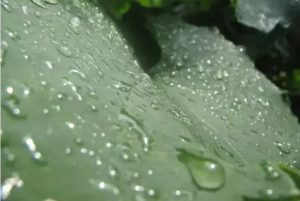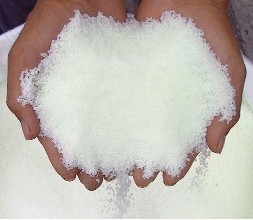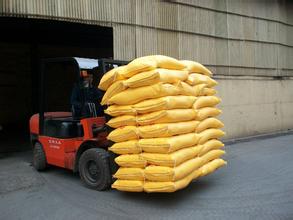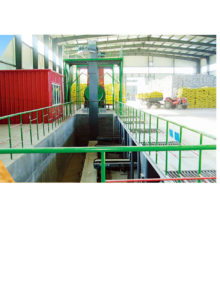Commonsense Problem of Fertilizer Knowledge

About chemical fertilizer, we should pay attention to these issues:
(1) No immediately watering after the use of urea.
(2) Ammonium bicarbonate should not be applied to the soil surface.
(3) Ammonium bicarbonate should not be applied in greenhouses.
(4) Ammonium nitrogen fertilizer should not be mixed with alkaline fertilizers.
(5) Nitrate nitrogen fertilizer can not to be applied in the paddy field.
(6) Ammonium sulfate should not be used for long time.
(7) Phosphate fertilizer should not be applied discretely.
(8) Potash should not be applied during the later growth period of crop.
(9) Chlorinated should not be applied individually for long time and also should not applied on anti-chlorine crops.
also should not applied on anti-chlorine crops.
(10) Nitrogen-containing compound fertilizer should not be used in large quantities for leguminous crops.
- How to use farm manure properly
(1) Compost: it is made of backlog of weeds and rubbish and it can be used according to local conditions. It is best to used as base fertilizer in spring and autumn.
(2) Green fertilizer: It is best to used as the base fertilizer or top dressing for leguminous crops. Making use of rhizobium to fix nitrogen element can improve soil fertility.
(3) Sheep manure: a kind of thermal fertilizer, should be mixed with pig manure, which is suit for cool soil and shady land.
(4) Pig manure: the content of organic matter, nitrogen, phosphorus and potassium is high. Composted pig manure can be applied to a variety of soil, especially for well-drained soil.
(5) Horse manure: the content of organic matter, nitrogen, cellulose is high and it also contains high temperature fiber decomposition bacteria. In the accumulation, its fermentation is fast, and it also has high heat which is suit for wet sticky soil, shady land and the stocked soil.
(6) Cow dung: low nutrient content, is a typical cool fertilizer. After shining, it should be mixed with 3-5% of ash or phosphate rock or horse manure to accumulate which can accelerate the decomposition of cow dung and improve fertilizer efficiency. It is best to used in combination with a thermal fertilizer or in sandy soils and sunny slopes.
(7) Human excretion: it can be directly used after maturation, and it can also be mixed with soil for top dressing.
(8) Poultry fertilizer: high nutrient content, can be used as seed fertilizer and top dressing fertilizer, it is mostly suit for vegetables.
- Why organic fertilizer should be fully decomposed
 before application
before application
Undetected manure organic fertilizer, carrying a large number of pathogenic microorganisms and parasitic roundworm eggs. When it is applied to farmland, part of pathogenic microorganisms and parasitic roundworm eggs attached to the crop will indirectly cause soil pollution, and part of them will directly get into soil so that lead to soil pollution.
In addition, if the organic manure without the maturity is applied to the soil, it should be absorbed selectively after fermentation. The fertilizer without maturity, on the one hand will produce high temperature so that lead to burning seedling phenomenon, on the other hand will release ammonia which will affect plant growth. Therefore, fertilizer in the application must be fully decomposed.
- The application of organic fertilizer should pay attention to those problems
(1) The nutrients contained in organic fertilizer is not a panacea. Organic fertilizers contain more types of nutrients which is an advantage if it is compared with a single nutrient fertilizer. However, the nutrients it contained are not balanced, can not meet the needs of high yield and quality of crops.
(2) Slow decomposition of organic fertilizer, and fertilizer effect is late. The nutrient content of organic fertilizer is completed but low it is low and it also decomposes slowly in the soil. It is difficult to meet the nutrient requirements of crops in the case of organic fertilizer is not very large.
(3) Organic fertilizer needs to be fermented. Many organic fertilizer with germs, eggs and weed seeds, some organic fertilizers have the organic compounds are not conducive to the growth, so should be piled fermented before application.
(4) The taboo of organic fertilizer using. Mature organic fertilizer should not be mixed with alkaline fertilizer and nitrate fertilizer.
- How to distinguish biological organic fertilizer and organic fertilizer
(1) To identify it by eyes. The appearance of bio-organic fertilizer is fully decomposed under the action of beneficial microorganisms is brown or dark brown, the color is relatively simple; and other organic fertilizer with different production operations, product colors are different, such as refined organic manure for the fecal color and the decomposed fertilizer in open air for color changed a lot.
(2)Smell of watering. The different organic fertilizers were placed in a cup filled with water, refined organic fertilizer and manure will emit odor due to fermentation or not completed fermentation , while such situation will not happen for the bio-organic fertilizer.
6 Fertilizer application methods are there
The main methods of application of compound fertilizer are the following:
(1) Used as base fertilizer: before sowing, soil preparation, we should sprinkle fertilizer to the surface. Then, turned the fertilizer to the soil bottom, usually under the top layer of 10 to 20 cm.
(2) Used as applied fertilizer: the distance of seeds and fertilizer should be 8 to 10 cm.
(3) Used as watering fertilizer: during the late period of crop growth, the fertilizer should  be dissolved before water.
be dissolved before water.
(4) Used as foliar fertilizer: After compound fertilizer is dissolved with certain proportion, the supernatant is sprayed on the front and back of the leaves after 4 o’clock in the afternoon, and can be absorbed in 24 hours, spraying once every 5 to 7 days.
- Pay attention to the application of mixed fertilizer
(1) The physical properties of the fertilizer should not deteriorate after the fertilizer is mixed
(2) The nutrients in the fertilizer can not be lost after mixing.
(3) If the fertilizer particles size are different, it is not allowed to be mixed.
(4) Fertilizer mix should be conducive to improving fertilizer efficiency and ergonomics.
- The effect of microbial fertilizers
(1) Through the activities of beneficial microorganisms, the molecular nitrogen, which can not be utilized in the air is converted to chemical nitrogen. The available phosphorus and potassium in the soil can be analyzed and the available phosphorus and potassium also can be resolved which can break down more than 10 kinds of trace elements.
(2) Secretion of auxin, cytokinin, gibberellin, indole acid and other plant hormones through the life activities of these beneficial microorganisms can promote crop growth, regulate crop metabolism, and construct quality products by genetic code.
(3) Through the multiplication of beneficial microorganisms in the rhizosphere, a large amount of polysaccharides are produced, and when it is combined with the mucus, mineral colloids and organic colloids secreted by the plants, it can form the soil aggregate structure, thereby enhancing soil storage and water retention capacity. Good quality microbial fertilizer can promote the growth of crops, improve the soil structure, the quality of crop products, disease prevention and disease resistance of crops, so as to increase yield and income.
9.The issues need to pay attention about microbial fertilizer promotion
(1) Microbial fertilizers that do not have a national certification can not be promoted.
(2) Do not use microbial fertilizer that can not reach the standard of effective viable bacteria.
(3) Microbial fertilizer that has been stored for more than the expiration date should not be used.
(4) storage conditions and methods of use shall be strictly in accordance with regulations.
- Foliar urea should pay attention to those problems
(1) Do not spray in hot weather or before rain, in order to avoid burning seedlings or loss of fertilizer. Spraying time should be morning or afternoon every day, spray every 7 to 10 days.
(2) Add 0.1% of the adhesive (such as detergent, clean) to fertilizer when we applied fertilizer to the crops of cereals or smooth leaves. Otherwise, the effect is not good.
(3)The spraying amount of urea, biuret can not be higher than 0.5% because high content is easy to damage leaves.
(4) Different crop types, the required concentration of spray urea solution also is different. The general requirements of cereal crops spraying concentration is 1.5 to 2%, which should be sprayed at the flowering stage. Leafy vegetables and cucumbers spraying concentration should be 1 to 1.5%. Apples, pears, grapes and other fruit trees should be 0.5%. Tomatoes should be 0.3%.
- Fertilizer and manure should pay attention to these issues
(1) Application time. Farming fertilizer effect is slow, it should be applied as early as possible, generally is before the sowing; and the amount of fertilizer should be less, the effect should be quick, generally should be applied before the crop nutrients absorption peak of about 7 days.
(2) Application method. Farming manure to be applied in soil after deep plowing, or ridge buckle into the ridge. Nitrogen fertilizer with farmhouse fertilizer, 30% as base fertilizer, 70% for top dressing. Phosphate fertilizer and potash should be applied as base fertilizer in one time.
after deep plowing, or ridge buckle into the ridge. Nitrogen fertilizer with farmhouse fertilizer, 30% as base fertilizer, 70% for top dressing. Phosphate fertilizer and potash should be applied as base fertilizer in one time.
(3) The number of applications. Fertilizer and manure should be applied together, the amount can be based on crop and soil fertility. For example, planting corn in the infertile soil, per mu can be applied farmyard 4 cubic meters, urea 24 kg, phosphate 13 kg, or 15 ~ 15 ~ 15 kg compound fertilizer.
- How to apply base fertilizer
View from the using amount of fertilizer, the specific amount of various fertilizers for the base fertilizer can refer to the local field fertilizer efficiency test results for many years and the target output and other comprehensive factors. The general high-fertility soil need nitrogen fertilizer on the total amount of about 30% for the bottom fertilization, medium and low fertile soil is 50% to 70% , and phosphorus, potash fertilizer and fertilizer should all be applied.
View from the fertilizer varieties, ammonium bicarbonate in nitrogenous fertilizer, general calcium in phosphate fertilizer, diammonium, calcium magnesium phosphate, potassium chloride in potassium, potassium sulfate, ash, fertilizer zinc fertilizers, all could be used as base fertilizer.
View from perspective, the general fertilizer should be applied to the entire tillage of the depth of 15 to 20 cm. For organic fertilizer, nitrogen fertilizer, potash fertilizer and trace fertilizer, it can be evenly mixed and applied on the earth surface and then plowed into the soil to make the fertilizer and the soil of the top layer evenly mixed.
Due to poor mobility of phosphate fertilizer, the application should be divided into two kinds, that is the lower applied to a depth of 15 to 20 cm, the upper applied to a depth of about 5 cm.
The article is quoted from: https://www.fert.cn/news/2017/11/13/114732298689.shtml
The previous: Fertilization Technology in Low Temperature
The next:
